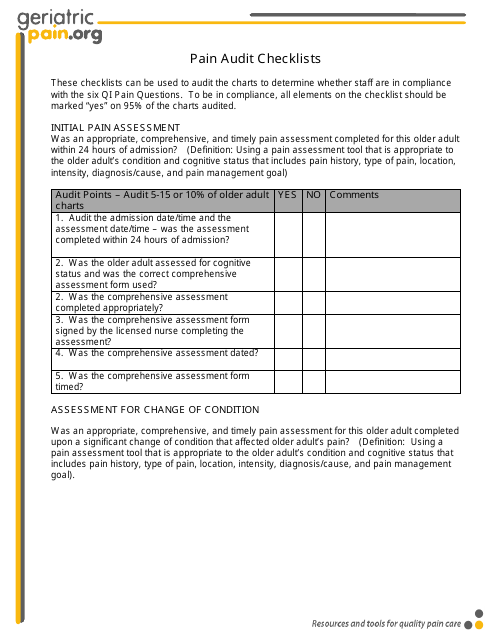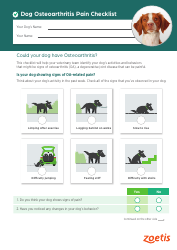Geriatric Pain Audit Checklist
The Geriatric Pain Audit Checklist is a tool used by healthcare professionals to assess and monitor pain in older adults. It helps identify potential causes of pain and guides interventions to improve the quality of life for elderly patients.
The Geriatric Pain Audit Checklist is typically filled out by healthcare professionals, such as doctors or nurses, who are conducting an assessment of pain in elderly patients.
FAQ
Q: What is the Geriatric Pain Audit Checklist?
A: The Geriatric Pain Audit Checklist is a tool used to assess and manage pain in older adults.
Q: Who is the Geriatric Pain Audit Checklist for?
A: The checklist is specifically designed for healthcare professionals who work with geriatric patients.
Q: What is the purpose of the Geriatric Pain Audit Checklist?
A: The checklist aims to help healthcare professionals identify and address pain issues in older adults, improving their overall quality of life.
Q: How does the Geriatric Pain Audit Checklist work?
A: Healthcare professionals use the checklist to evaluate various aspects of pain, including its intensity, location, and impact on daily activities, in order to develop an appropriate pain management plan.
Q: What are the benefits of using the Geriatric Pain Audit Checklist?
A: Using the checklist can lead to better pain assessment, enhanced communication between healthcare providers and patients, and improved pain management outcomes in older adults.
Q: Is the Geriatric Pain Audit Checklist widely used?
A: Yes, the checklist is widely used in healthcare settings that specialize in caring for elderly patients to ensure comprehensive pain management.











